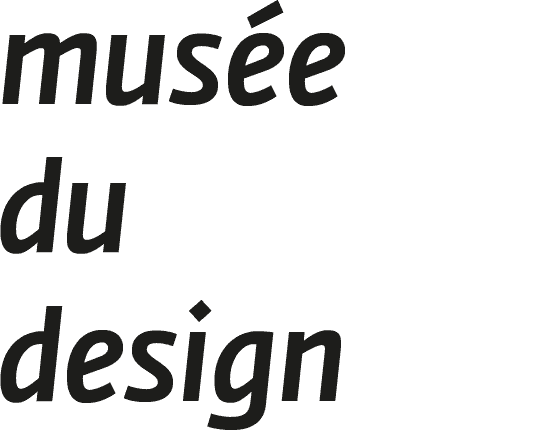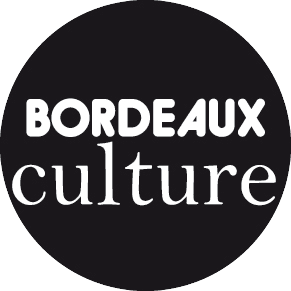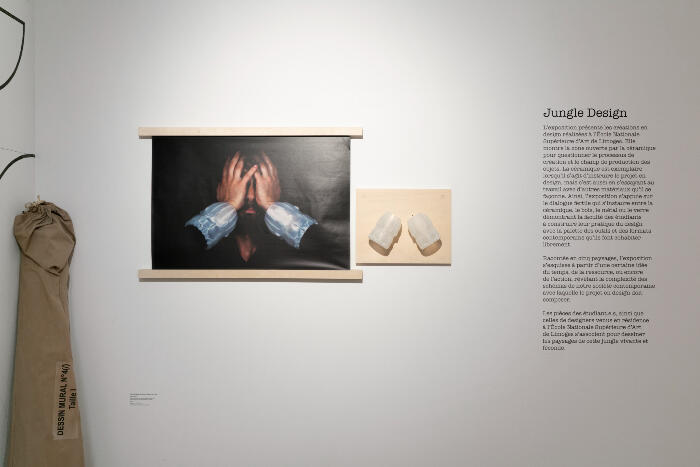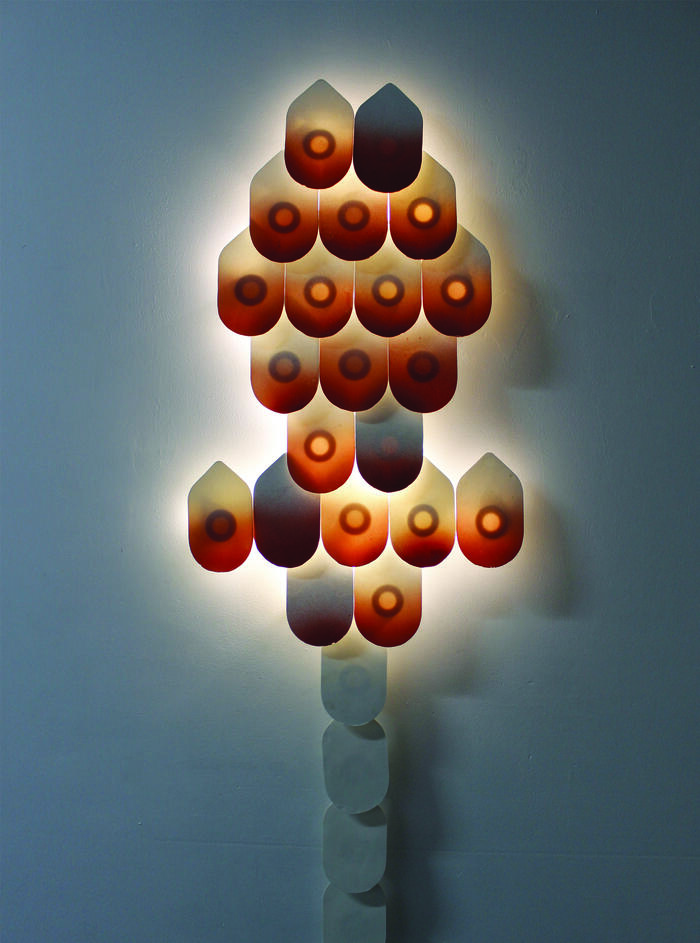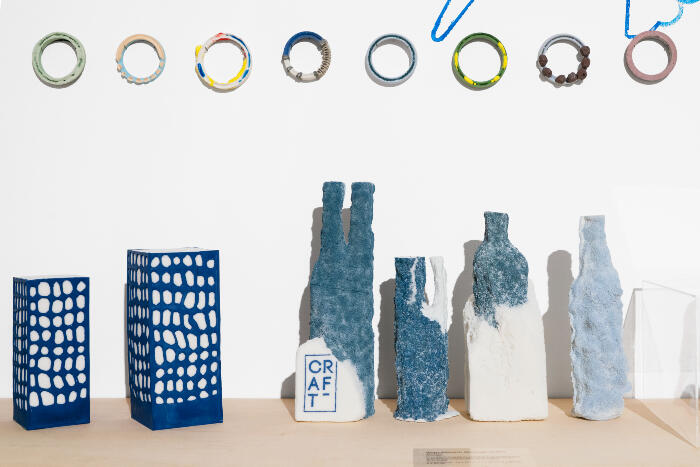Jungle Design
Design at the National School of Art of Limoges
The exhibition presents the design creations produced at the National School of Art of Limoges. It shows the area opened by the ceramic practice to question the creative process and the production field of objects.
Ceramic is exemplary when it comes to developing a design project, but the latter is also shaped through the work with other materials. Thus, the exhibition relies on the fruitful dialogue established between ceramic, wood, metal or glass, demonstrating the students’ ability to build their design practice with a palette providing a free cohabitation of tools and contemporary formats.
Through five landscapes, the exhibition takes shape from a certain idea of time, resource and even action, thereby revealing the complexity of our contemporary society schemes with which the design project has to work.
The students’ pieces, along with pieces of designers who came in residence at the National School of Art of Limoges such as Martin Szekely, François Bauchet, Laureline Galliot, Gilles Clément, are joined to draw the landscapes of this living and fertile jungle.
Opening of the exhibition: Thursday 3 March at 7pm
SHARE YOUR VISIT WITH US
#jungle design #madd_bordeaux
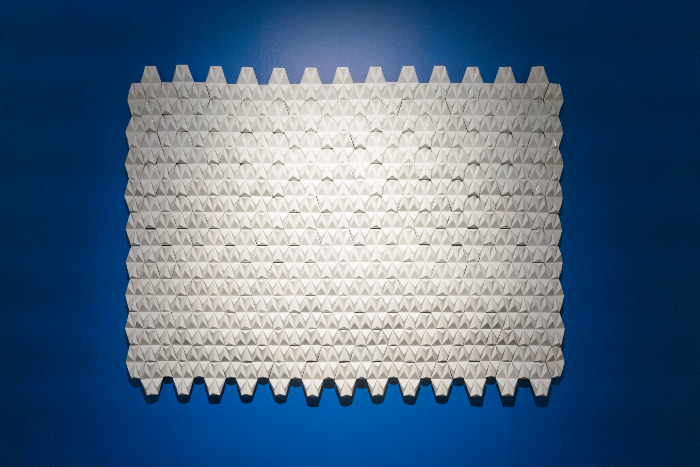
The 5 landscapes of the exhibition: “Rien n’est vrai tout est vivant” / "Nothing is true, everything is alive" 1
1 - The emancipatory autarkies
Autarky could sound like a retreat that would go against the collaborative dimension of the design project if it is only considered as a design approach that includes needs and actors. But autarky is also a formative and emancipatory approach towards experimentation. The presented projects express the need to do and bring to life, without compromise, by distancing themselves from contexts and the complexity of the contemporary design challenges. They are produced within the protective bubble and the ecosystem of a school and require the appropriation of tools, materials and knowledge there. These experiments can have an exercise dimension, requestioning or rechecking what is known. Thus, artistic research, drawing logics, technical implementations, types of objects that represent the design historical markers can be sifted through a sometimes naïve but necessary reappropriation for the construction of a culture of the object.
2 - Collaboration, co-design and co
The design creations presented here are part of the dynamics of sharing. Whether it is collaboration with local players, inhabitants, social structures etc. these projects question the do it together and its different forms: do it with, co-construct, cohabit, make one do.
Here, design maintains a strong link with the outside.
3 - New arrangements
Design projects come from a complex equation based on heterogeneous data. This landscape approaches this contemporary update of design reflection by the integration of current issues. These new arrangements reposition design in its history and present.
Today, rethinking the mobility, rethinking the materiality, integrating challenges linked to sustainable development and ecology may require the invention of new types of objects resulting from principles that combine and coexist within the same project.
4 - Ceramics, reflection of design
This landscape presents ceramic in the design field not only as a material but as a research laboratory and educational resource in design. The projects question the uses and place of ceramics particularly through s of its fields of application. Approaches as much as research on ceramic materials, reveal the questioning of a generation, far beyond a savoir-faire. It allows the students in design to approach the production and the manufacturing process, the production and publishing scales. The territory of Limousin, rich of its artisans, manufactures, factories, cultural places and specialised research centres, constitutes an exceptional enrichment for their training.
The National School of Art of Limoges has workshops dedicated to ceramics of more than 900m².
5 - Shift, speculation, uncertainty
These creations initiate discussions, question and speculate on futures or attempt explorations that can shake up the very identity of design. They also speak about the introspective and reflexive part of design that disrupts its boundaries.
They revisit the proximity of design to art, the functional dimension of the project, and they mix utopia and dystopia. Here, it is the place of the discourse by the object and the “manifest” object
1 Title of the last public conference that the philosopher, poet and novelist Édouard Glissant pronounced on 8 April 2010 at the Maison de l’Amérique Latine, at the closing of the seminar of the Institut du Tout-Monde: “Transformations of the living in a world in relation”.

Graphic design
Antonin Faurel
The museum would like to thank
Château Haut-Bailly,
patron of honor
The National School of Art of Limoges, its director Françoise Seince, Indiana Collet-Barquero, professor of history and theory of design at the ENSA Limoges along with the lecturers Nathanaël Abeille, designer, Alain Doret, artist, Arnaud Dubois, anthropologist, Corenthin Ferbus, designer, Nicolas Gautron, graphic designer, Olivier Sidet, designer and Anne Xiradakis, designer.
The students or former students of the object design bachelor's or master's degree: Xavier Archambeaud, Perrine Azevedo, Elvire Blanc-Briand, Auréline Caltagirone, Béatrice Delaunay, Maxime Demery, Dorian Felgines, Louise Ferri, Audrey Fontenoy, Mathieu Gaspar, Zelian Grasset, Charlotte Grébert, Romain Jamet, Mathilde Jobron, Antoine Lomenech, Cécile Maes, Léa Martin, Clément Polteau, Paul Donadieu de Lavit, Antoine Schacherer, Zelian Grasset, Manon Papin, Jean Ramon, Jean Savard, Corentin Thilloy, Marjorie Tirollois and Song Eui Lee.
The personalities who came in design and jewellery residence at the National School of Art of Limoges: François Bauchet, Patrick Beaulieu, Gilles Clément, Laureline Galliot, Laurent Massaloux, Karin Seufert, Tore Svensson and Martin Szekely.
The workshops and the staff of the National School of Art of Limoges for their involvement.
For their fidelity, the museum would also like to thank
The friends of the madd-bordeaux
Château Nairac
Fonds d’Initiatives Lafite
Hôtel Cardinal
InterContinental Bordeaux – Le Grand Hôtel
Keolis Bordeaux Métropole
Les Crus Bourgeois du Médoc
La société de négoce DIVA
Librairie Mollat - Station Ausone

